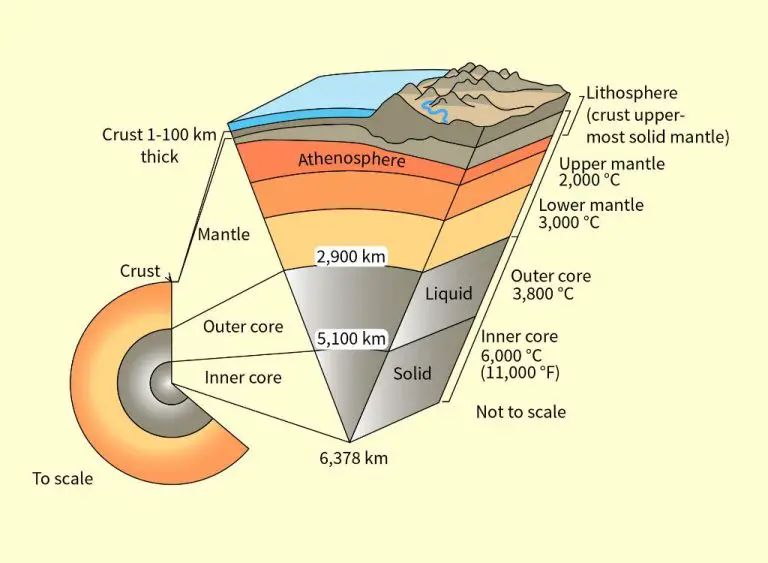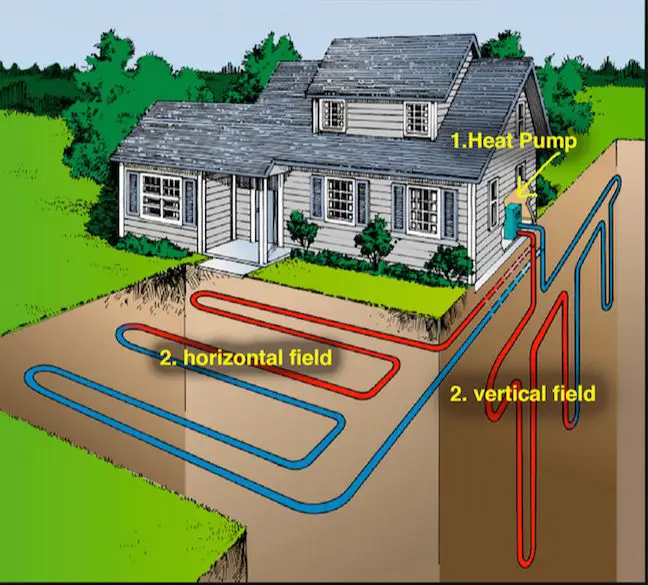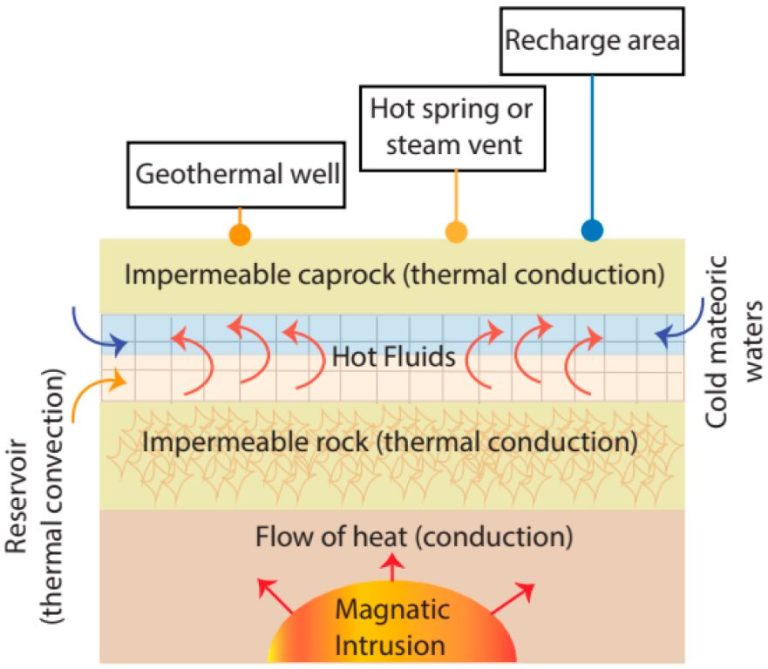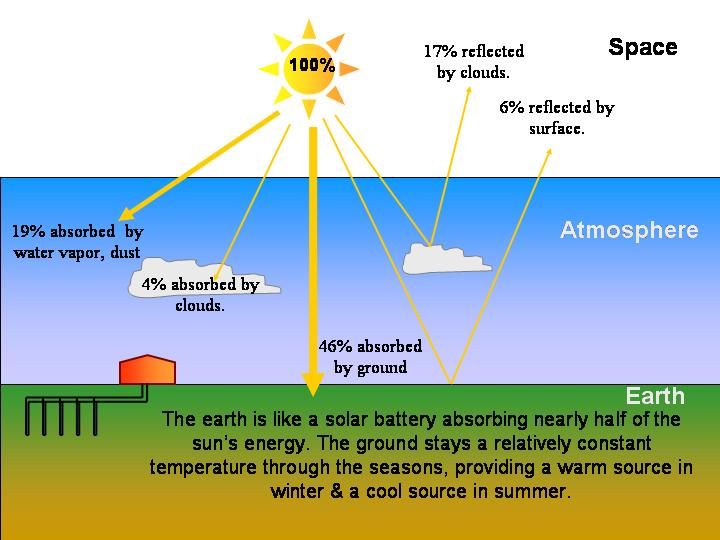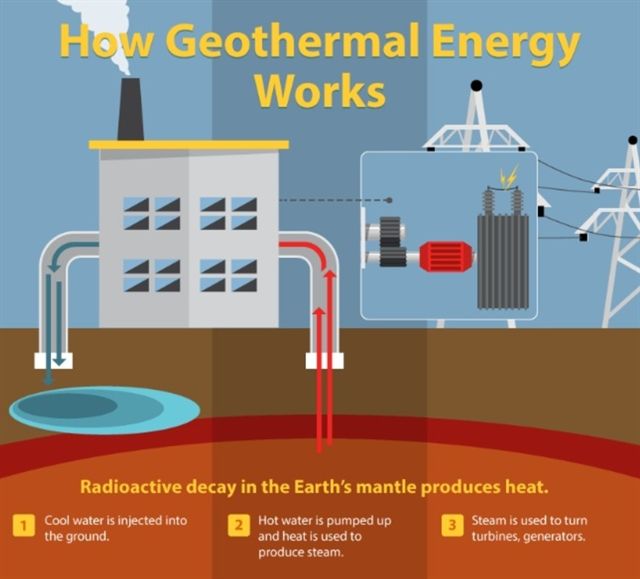What Is Geothermal Energy And Why Is It Good?
What is Geothermal Energy?
Geothermal energy is heat energy generated and stored within the Earth (1). It comes from the original formation of the planet as well as the radioactive decay of minerals (1). The word geothermal comes from the Greek words geo (earth) and therme (heat) (2).
Geothermal energy is classified as a renewable energy source because heat is continuously produced inside the Earth. The heat continuously flows to the surface even as some geothermal reservoirs get depleted through energy production. Geothermal energy provides a stable baseline energy output as it is not reliant on inconsistent energy sources like wind and sunlight (2).
(1) https://www.eia.gov/energyexplained/geothermal/
(2) https://www.twi-global.com/technical-knowledge/faqs/geothermal-energy
How Geothermal Energy Works
Geothermal energy taps into the heat from the Earth’s core where temperatures can reach over 4,000 degrees Celsius from radioactive decay and residual heat from the planet’s formation 4.5 billion years ago. This heat conducts up through the different layers of rock in the Earth’s crust at a rate of 30 degrees Celsius per kilometer of depth (1F for every 70 feet). This geothermal heat can be as close as 10 feet below the Earth’s surface though it gets significantly hotter with more depth. UCSUSA
With sufficiently high underground temperatures, naturally occurring water or water that is injected into fractured rock in the form of a heat transfer fluid can be heated into steam to drive turbines and generate electricity. This heated water and steam sometimes also makes its way naturally to the surface through faults and porous soil in the form of hot springs and geysers, which demonstrate the geothermal energy coming from the Earth’s depths.
Types of Geothermal Energy Systems
There are three main types of geothermal energy systems1:
Geothermal Power Plants
Geothermal power plants use steam from geothermal reservoirs to turn turbines and generate electricity. There are three types of geothermal power plant technologies:
- Dry steam plants use steam from the geothermal reservoir directly to turn the turbine generators.
- Flash steam plants take high-pressure hot water from the reservoir, reduce the pressure to create steam, and use that steam to power the turbines.
- Binary cycle plants transfer the reservoir heat to another liquid with a lower boiling point, using the resulting vapor to drive the turbines2.
Geothermal Heating/Cooling Systems
Geothermal heating/cooling systems circulate water through pipes buried underground to transfer heat between the earth and buildings. In winter, the system pulls heat from the earth into the building. In summer, the system transfers heat from the building back into the cooler earth.
Geothermal Heat Pumps
Geothermal heat pumps use stable underground temperatures near buildings to heat and cool interior spaces. These systems transfer heat between the building and ground through pipes containing water or antifreeze solution.
Benefits of Geothermal Energy
Geothermal energy provides several key benefits that make it an attractive renewable energy source:
Geothermal is a renewable energy source. The heat from the Earth’s core is constantly being replenished and will be available for as long as the Earth exists. This makes geothermal a reliable long-term energy solution.
Geothermal energy can reduce fossil fuel usage. Since it provides constant baseload power, geothermal plants can replace fossil fuel power plants and help reduce greenhouse gas emissions. According to the Department of Energy, geothermal power plants emit 98% less carbon dioxide than natural gas plants.
Geothermal energy has low emissions and a small environmental footprint compared to conventional power plants. Geothermal plants release less than 1% of the carbon dioxide emissions of a fossil fuel plant. The plants require very little land and do not require mining or transportation of fuel.
Geothermal power is reliable since it has a capacity factor over 90%, compared to the national grid average of around 40-50%. Geothermal plants operate continuously without interruption to provide baseload power. This reliability results in a stable cost per kilowatt hour.
Sources: https://www.energy.gov/eere/geothermal/geothermal-faqs, https://www.enelgreenpower.com/learning-hub/renewable-energies/geothermal-energy/advantages
Limitations of Geothermal Energy
While geothermal energy has many advantages, it also comes with some limitations. Here are some of the main drawbacks of geothermal systems:
Geothermal Energy: Advantages & Disadvantages (2024)
High Upfront Costs: The initial installation of geothermal systems can be expensive, with costs ranging from $10,000 to over $30,000 for residential systems. This is because geothermal systems require drilling, specialized equipment, and excavation to install the loop system.
Geothermal Energy Pros and Cons
Limited to Certain Geographic Locations: Geothermal energy is heavily dependent on the subsurface temperature of an area, so it can only be implemented in regions with adequate geothermal resources. This limits widespread adoption.
Potential Emissions if Not Managed Well: While geothermal systems produce minimal emissions when designed properly, hydrogen sulfide and carbon dioxide emissions can occur if the geothermal fluids aren’t controlled or treated. Proper reservoir management is essential.
Global Use of Geothermal
Geothermal energy is used worldwide, but is more prevalent in certain countries due to favorable geographic conditions. According to the International Renewable Energy Agency (IRENA), the top countries utilizing geothermal power in 2021 were:
- United States – 3,677 MW
- Indonesia – 2,042 MW
- Turkey – 1,800 MW
- New Zealand – 1,042 MW
- Iceland – 755 MW
The United States, despite its large population, was the global leader in installed geothermal capacity. This was due to active geothermal regions in western states like California and Nevada. Iceland generated the highest share of its electricity from geothermal sources at 25%, owing to the island’s location along tectonic plate boundaries.
According to the International Energy Agency (IEA) Geothermal Energy, worldwide geothermal installed capacity for power generation and direct heating was estimated at 16.9 GW in 2021. While geothermal accounts for only a small fraction of global renewable energy production currently, there is significant potential for growth in the coming decades with technology improvements and greater adoption worldwide.
Geothermal’s Potential
Geothermal energy has huge untapped potential globally. According to the US Department of Energy, just 6-7 gigawatts of geothermal electricity generation capacity is currently installed worldwide, less than 0.3% of total global power capacity. However, the geothermal electricity generation potential is estimated to be hundreds of gigawatts globally.
With improved technology that can access deeper geothermal resources, geothermal power generation could expand significantly. The MIT-led GEA Report estimates geothermal electricity generation could grow to 100 gigawatts globally by 2050. If realized, this growth could provide substantial clean, renewable energy to help meet the world’s rising energy demands.
Geothermal’s ability to provide consistent baseload power differentiates it from intermittent renewable sources like wind and solar. Expanding geothermal electricity generation around the world could play an important role in transitioning away from fossil fuels and building out sustainable energy infrastructure.
Recent Geothermal Technology Advances
Geothermal technology has advanced rapidly in recent years, leading to major improvements in efficiency and viability. Some key innovations include:
Improved drilling techniques: New methods like directional drilling and managed pressure drilling allow developers to precisely reach geothermal resources deep underground. This enables access to hotter temperatures previously beyond reach.[1]
Binary power plants: Binary geothermal plants use hot water from underground to heat a secondary fluid with a much lower boiling point. The vapor from this fluid powers the generators. Binary plants are more efficient at lower temperatures.[2]
EGS systems: Enhanced geothermal systems (EGS) tap into hot dry rock through hydraulic fracturing. Fluid is pumped underground, the rock fractures, and this allows circulation to harness the heat. EGS expands geothermal viability to areas previously unsuitable.[1]
These and other innovations allow geothermal power generation in a wider range of locations and with greater efficiency. Continued progress in drilling, plant design, and reservoir engineering will further unlock the potential of geothermal energy.
[1] https://www.nrel.gov/news/features/2023/full-steam-ahead-unearthing-the-power-of-geothermal.html
[2] https://about.bnef.com/blog/next-generation-geothermal-technologies-are-heating-up/
The Future of Geothermal
Geothermal energy has significant potential for growth in the coming years. According to a report from the MIT Energy Initiative, the U.S. has the capacity to generate over 100 gigawatts of power from geothermal sources by 2050, compared to just over 3 gigawatts currently. This projected growth is based on advances in technology that allow access to geothermal resources deeper underground and improvements in enhanced geothermal systems (EGS) [1].
Areas of likely expansion for geothermal include the Western U.S., Hawaii, Alaska and parts of the Caribbean. While traditional hydrothermal resources are limited, EGS can be implemented almost anywhere with hot dry rocks deep below the surface. Drilling to access these deep geothermal reservoirs is expensive currently, but costs are expected to come down with improved drilling techniques and higher temperature drilling fluids [2].
While geothermal is consistent and reliable, it does have limitations in terms of upfront costs and suitable locations. Hybrid plants that combine geothermal with solar PV or biomass generation can help overcome intermittency issues and enable greater deployment of renewable energy. Continued research and investment into EGS will also help make geothermal cost-competitive with conventional power generation [3].
[1] https://energy.mit.edu/research/future-geothermal-energy/
[2] https://e360.yale.edu/features/can-geothermal-power-play-a-key-role-in-the-energy-transition
[3] https://www.nrel.gov/news/features/2023/full-steam-ahead-unearthing-the-power-of-geothermal.html
Conclusions
Geothermal energy is a renewable, clean, and sustainable energy source that utilizes the Earth’s internal thermal energy to generate steam and electricity. There are different types of geothermal energy systems, including hydrothermal, enhanced geothermal systems, and geothermal heat pumps, that can provide heating, cooling, and power generation.
Some key benefits of geothermal energy are that it has a small land footprint, emits little to no greenhouse gases, provides constant baseload power, and has a high capacity factor. While geothermal does have some limitations like high upfront costs and specific location requirements, the technology is constantly improving.
Many countries around the world already utilize geothermal, but there is vast potential to expand development with 5,000 ZJ of thermal energy available worldwide. Recent advances in enhanced geothermal systems and co-production of geothermal electricity and minerals could further unlock this abundant resource.
Geothermal energy will likely play an important role as part of a diverse renewable energy mix that can provide reliable, sustainable power for the future. With further research and development, geothermal can become more cost-competitive and widely adopted worldwide as a clean energy solution.

